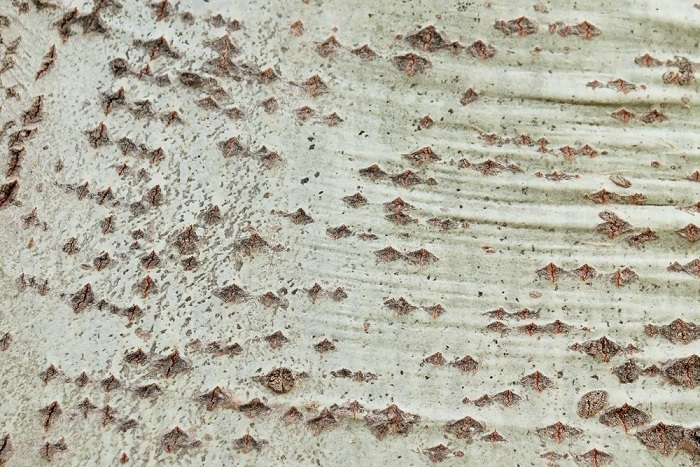
 Data Structure
Data Structure Networking
Networking RDBMS
RDBMS Operating System
Operating System Java
Java MS Excel
MS Excel iOS
iOS HTML
HTML CSS
CSS Android
Android Python
Python C Programming
C Programming C++
C++ C#
C# MongoDB
MongoDB MySQL
MySQL Javascript
Javascript PHP
PHPPhysics
Chemistry
Biology
Mathematics
English
Economics
Psychology
Social Studies
Fashion Studies
Legal Studies
- Selected Reading
- UPSC IAS Exams Notes
- Developer's Best Practices
- Questions and Answers
- Effective Resume Writing
- HR Interview Questions
- Computer Glossary
- Who is Who
Which of The Following Structures Is Involved in Gaseous Exchange in The Woody Stem of a Plant? (a) Stomata (b) Lenticel (c) Guard cell (d) Epidermis
Introduction
Plants are complex living organisms that rely on several biological processes to survive and thrive. One of the essential processes is gaseous exchange, which involves the intake of carbon dioxide and the release of oxygen through specialized structures in the plant's leaves, stem, and roots.
In the woody stem of a plant, gaseous exchange occurs through structures known as stomata, lenticels, guard cells, and epidermis. In this article, we will explore these structures in detail and discuss their role in gaseous exchange in the woody stem of a plant.
Stomata
Stomata are tiny pores that occur on the surface of leaves, stems, and other plant parts. These pores are surrounded by specialized cells known as guard cells, which regulate the opening and closing of the stomata. The primary function of stomata is to regulate the exchange of gases, including carbon dioxide, oxygen, and water vapor, between the plant and its environment.
During the process of photosynthesis, stomata open to allow the uptake of carbon dioxide, which is essential for the production of glucose and other organic compounds. Simultaneously, stomata release oxygen, which is a by-product of photosynthesis.
In the woody stem of a plant, stomata occur on the bark, which is the outermost layer of the stem. Bark serves as a protective layer, preventing damage from external factors such as insects, weather conditions, and physical damage. However, the bark is not a completely impermeable layer and allows for gas exchange to occur through the stomata.
Lenticels
Lenticels are structures that occur on the bark of woody stems and roots. These structures are slightly raised and appear as small bumps or pores. Lenticels are formed from loosely arranged cells in the bark, which allows for the diffusion of gases through the pores. The primary function of lenticels is to facilitate gas exchange between the plant and its environment, similar to stomata.
Unlike stomata, lenticels do not have specialized cells to regulate their opening and closing. Instead, lenticels are always open, allowing for a constant exchange of gases. The size and distribution of lenticels vary depending on the plant species and environmental conditions. In general, lenticels are more abundant and larger in plants growing in wet environments, where oxygen availability is limited due to the waterlogged soils.

Guard Cells
Guard cells are specialized cells that surround the stomata in leaves, stems, and other plant parts. These cells have a kidney-shaped structure, and their primary function is to regulate the opening and closing of stomata. Guard cells control the opening and closing of stomata by changing their shape in response to environmental stimuli, such as light, temperature, and humidity.
When guard cells are turgid, stomata open, allowing for the exchange of gases. When guard cells lose turgor pressure, stomata close, reducing the exchange of gases. The regulation of stomatal opening and closing is essential for the efficient exchange of gases, as it prevents excessive water loss through transpiration.
In the woody stem of a plant, guard cells occur in the bark, surrounding the stomata. These cells play a critical role in regulating the exchange of gases through the stomata, allowing for efficient photosynthesis and respiration.
Epidermis
The epidermis is the outermost layer of cells in the stems, leaves, and other plant parts. The epidermis provides a protective barrier against external factors, such as physical damage, insects, and weather conditions. In the woody stem of a plant, the epidermis is replaced by bark as the stem grows and matures.
Although the epidermis does not directly participate in gaseous exchange, it plays a crucial role in regulating the water balance of the plant. The epidermis contains specialized cells known as trichomes, which can absorb or repel water depending on the environmental conditions. This mechanism allows the plant to regulate its water balance, preventing excessive water loss or absorption.

Conclusion
Gaseous exchange is a critical biological process that allows plants to survive and thrive. In the woody stem of a plant, gaseous exchange occurs through specialized structures such as stomata, lenticels, guard cells, and epidermis. Stomata and lenticels are responsible for the exchange of gases, including carbon dioxide, oxygen, and water vapor, between the plant and its environment.
Guard cells regulate the opening and closing of stomata, ensuring efficient gas exchange and preventing excessive water loss. The epidermis serves as a protective layer, preventing damage from external factors, and regulating the water balance of the plant.
Understanding the role of these structures in gaseous exchange is essential for plant biologists, farmers, and horticulturists. By studying the mechanisms of gaseous exchange in plants, we can develop new strategies for improving crop yield, managing environmental stress, and reducing the carbon footprint of agriculture. Moreover, understanding the interplay between different structures involved in gaseous exchange can help us appreciate the complexity and diversity of life on earth.

